
Critical Care
2 days
Nerve Block Ultrasound Course (Anaesthetics)
ASUM, ACEM, ACRRM, RACGP, ANZCA, CICM
Course highlights
- Perform common nerve blocks with guidance
- Upper, lower limb & truncal blocks covered
- Gastric antrum assessment for aspiration risk.
- Real-time scanning with live models
- Improve needle visualisation & technique
- Learn from clinical & sonographic experts
Course Dates
Description
Ultrasound-guided regional anaesthesia is now a core competency in anaesthetic practice, but learning it on the job can be inconsistent. This focused two-day course delivers the essential knowledge and hands-on training to help anaesthetists perform a wide range of peripheral and truncal nerve blocks with confidence.
Alongside block techniques, the course also introduces gastric antrum assessment for aspiration risk, giving you an additional tool to support safe anaesthesia planning in the perioperative setting.
You’ll learn to identify key sono-anatomy, optimise machine settings for nerve visualisation, and practise safe, precise needle guidance techniques on phantoms. The course covers commonly used nerve blocks in upper and lower limb anaesthesia (including brachial plexus approaches, femoral, adductor canal, and ankle blocks), as well as truncal techniques such as TAP, rectus sheath, PECS, and erector spinae plane blocks.
Led by experienced instructors, this practical course is ideal for anaesthetists looking to expand their regional anaesthesia repertoire, improve patient outcomes, and streamline procedural workflows.
What you’ll learn
- Recognise the sonoanatomy of key peripheral and truncal nerve block sites.
- Optimise ultrasound settings to improve visualisation of nerves and adjacent structures.
- Apply standardised protocols to locate upper, lower limb, and trunk blocks.
- Practise techniques to enhance block success and minimise complications.
- Assess the gastric antrum to evaluate aspiration risk as part of perioperative decision-making.
- Understand how to incorporate ultrasound-guided nerve blocks into clinical anaesthesia pathways.
Block techniques covered include:
- Upper limb: Interscalene, supraclavicular, infraclavicular, axillary, individual nerves.
- Lower limb: Femoral, fascia iliaca, adductor canal, popliteal sciatic, ankle.
- Truncal blocks: TAP, rectus sheath, PECS I & II, erector spinae plane, paravertebral.
This nerve block course is led by an Anaesthetist. For nerve blocks led by an Emergency Physician, please click here.
Register today — Pay later.
Select “Invoice Me” at checkout to receive a tax invoice due 45 days before your course.
Ideal if you’re waiting on funding or leave approval.
Who should attend?
- Anaesthetist
- Junior House Officer
- Pain Management Specialist
- Palliative Medicine Physician
- Rural Generalist
Objectives
The objectives of this ultrasound course are:
- To identify the ultrasound appearances of nerves and relational anatomical landmarks for specific upper, lower, trunk and core blocks.
- To optimise the ultrasound machine to enhance visualisation of the anatomical regions.
- To apply ultrasound protocols to correctly locate blocks.
- To develop techniques to avoid nerve injury and troubleshoot complications associated with nerve injury.
Meet the Faculty
Learn from our Sonographer Faculty and our Anaesthetics Faculty, combining scanning expertise with peri-operative and critical care expertise.
Prerequisites
The prior ultrasound experience assumed for this course is highlighted below.
| None/Minimal | Don’t use ultrasound |
| Limited | Use ultrasound weekly/monthly |
| Moderate/Experienced | Use ultrasound daily/weekly |
Accreditation
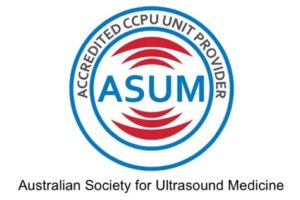 ASUM
ASUM
CCPU units included in the course:
- Proximal Brachial Plexus Block: Supraclavicular/Interscalene
- Upper Limb Peripheral Nerve Blocks
- Paravertebral Block
- Erector Spinae Plane Block
- Serratus Anterior Plane Block
- Fascia Iliaca and Femoral Nerve Block
- Distal Brachial Plexus Block: Infraclavicular/Axillary
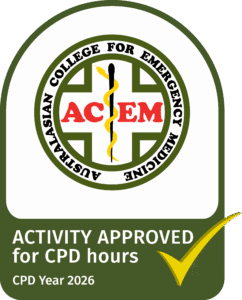 ACEM
ACEM
Approved for Educational Activities 15.25 hours.
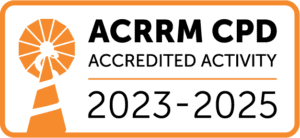 ACRRM
ACRRM
This course is approved for 16 total activity hours. PDP units: 1 Performance Review, 15 Educational Activity. MOPS points: 1. Grant eligibility: Emergency Medicine, Anaesthetics, Obstetrics, Surgery.
 RACGP
RACGP
CPD Approved Activity under RACGP 2023-25 CPD program. Approved for Educational Activities 4.25 hours, Reviewing Performance 10.25 hours, specific requirements diagnostic radiology, 2 days Anaesthetics, Obstetrics, Surgery and Emergency Medicine training grants. Provider Number 214288, Activity ID 394482.
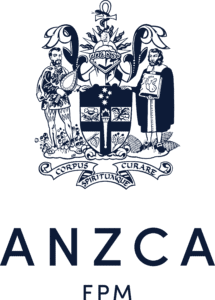 ANZCA
ANZCA
Participants in the ANZCA and FPM CPD program may claim this course under the Knowledge and Skills activity short format learning at 2 credits per hour.
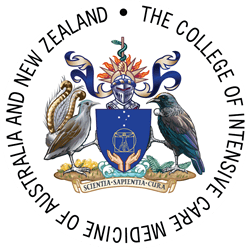 CICM
CICM
Lectures – Category 2A, points per hour 1;
Demonstrations – Category 2B, points per hour 2;
Skills – Category 3B, points per hour 3.

HOURS
| Theoretical | 4.25 |
| Practical | 8.25 |
| Total | 12.5 |
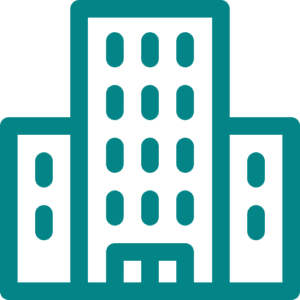
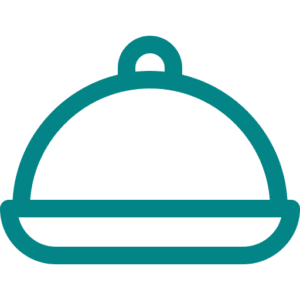
CATERING
Morning tea, a light lunch and refreshments are provided each day.
